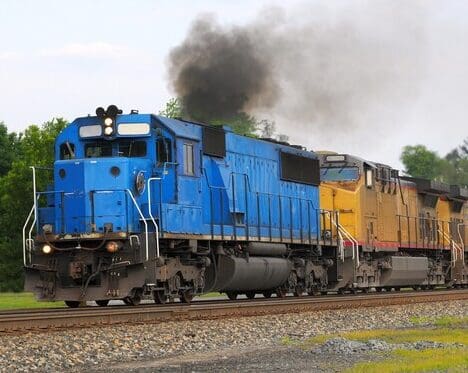The California Air Resources Board (CARB) passed a new rule aimed at reducing emissions from locomotives when they operate within the state. Under the In-Use Locomotive Regulation, operators will now be required to pay into a spending account, and the amount will be determined by the emissions they create while operating in California. Companies will be able to use the funds to upgrade to cleaner locomotive technologies. Locomotives also will have a 30-minute idling limit. Additionally, switch, industrial, and passenger locomotives built in 2030 or after will be required to operate in zero-emissions configurations while in California, and in 2035 for freight line haul.
“Locomotives are a key part of California’s transportation network, and it’s time they are part of the solution to tackle pollution and clean our air,” said CARB Chair Liane Randolph. “With the new regulation, we are moving toward a future where all transportation operations in the state will be zero emissions.”
Currently, operational emissions from just one train are worse than those of 400 heavy-duty trucks, according to CARB. To further underscore the impact of locomotive operations in California, emissions reductions from the new regulation are expected to be equal to almost double those emitted by all passenger vehicles in the state between now and 2050. It is projected that the In-Use Locomotive Regulation will contribute the largest reduction in NOx emissions toward meeting California air quality standards by the 2037 deadline.
The new rules offer flexibility to come into compliance, including alternatives to meet milestone deadlines and extensions for reasons that can include issues with available technologies or emergency situations. Funding programs are available, particularly for companies taking early action or those looking to go beyond the regulation’s requirements. Funding support may be available through the Carl Moyer Program, Community Air Protection Incentives, Volkswagen Environmental Mitigation Trust, and other programs such as Advanced Technology Demonstration and Pilot Projects funded through the Low-Carbon Transportation program. Additionally, billions in federal grants and rebates to reduce air pollution are available for operators.

















